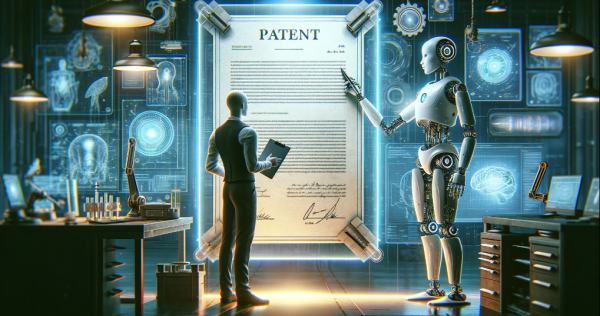by Dennis Crouch
The U.S. Patent and Trademark Office (USPTO) recently published examination guidance and a request for comments on the treatment of inventorship for inventions created with the assistance of artificial intelligence (AI) systems. Inventorship Guidance for AI-Assisted Inventions.
The key takeaway here is that the USPTO believes that an AI-developed invention is patentable so long as a human satisfies the joint-inventorship standard of "significantly contributing to the invention." A human who provides a significant contribution may be the sole inventor and original owner, even in situations where the AI provided the greater contribution.
The PTO's approach here is fairly broad and will likely serve current AI use cases in most situations because most AI invention models of today are tightly controlled and managed by humans rather than simply arising from AI autogeneration or broad prompting. Thus, from a practical effect, there will likely be at least one natural person who satisfies the joint inventorship standard in the vast majority of cases. (Recognizing here that mere control of an AI is insufficient. Rather, the human must provide significant inventive contribution).
Although I am very sympathetic to recognizing human contributions, I also want a patent system that broadly encourages innovation without either prescribing or proscribing particular approaches. The flexibility of this guidance allows room for both human and machine intelligence to intersect in the creative process. But, we should continue monitoring the effects the policy to ensure it does not unduly constrain AI's eventual capacity to autonomously formulate inventive concepts. But for now, the USPTO's basic framework reasonably balances competing interests.
But, the USPTO's approach is not fully grounded in the law because it allows for patenting of an invention in a situation where no human or combination of humans fully conceived of and originated the invention. Rather, we are simply looking for at least one human who provided a significant contribution. The guidance does not particularly address this issue and, by declining to specifically justify the legal grounds why human "significant contributions" suffice even without complete conception, the USPTO leaves the door open to contrary arguments. Opponents could contend that full conception remains legally required for inventorship and that this expansion of the inventorship doctrine exceeds the statutory language. It is not clear who will have standing to make this particular argument.

To continue reading, become a Patently-O member. Already a member? Simply log in to access the full post.